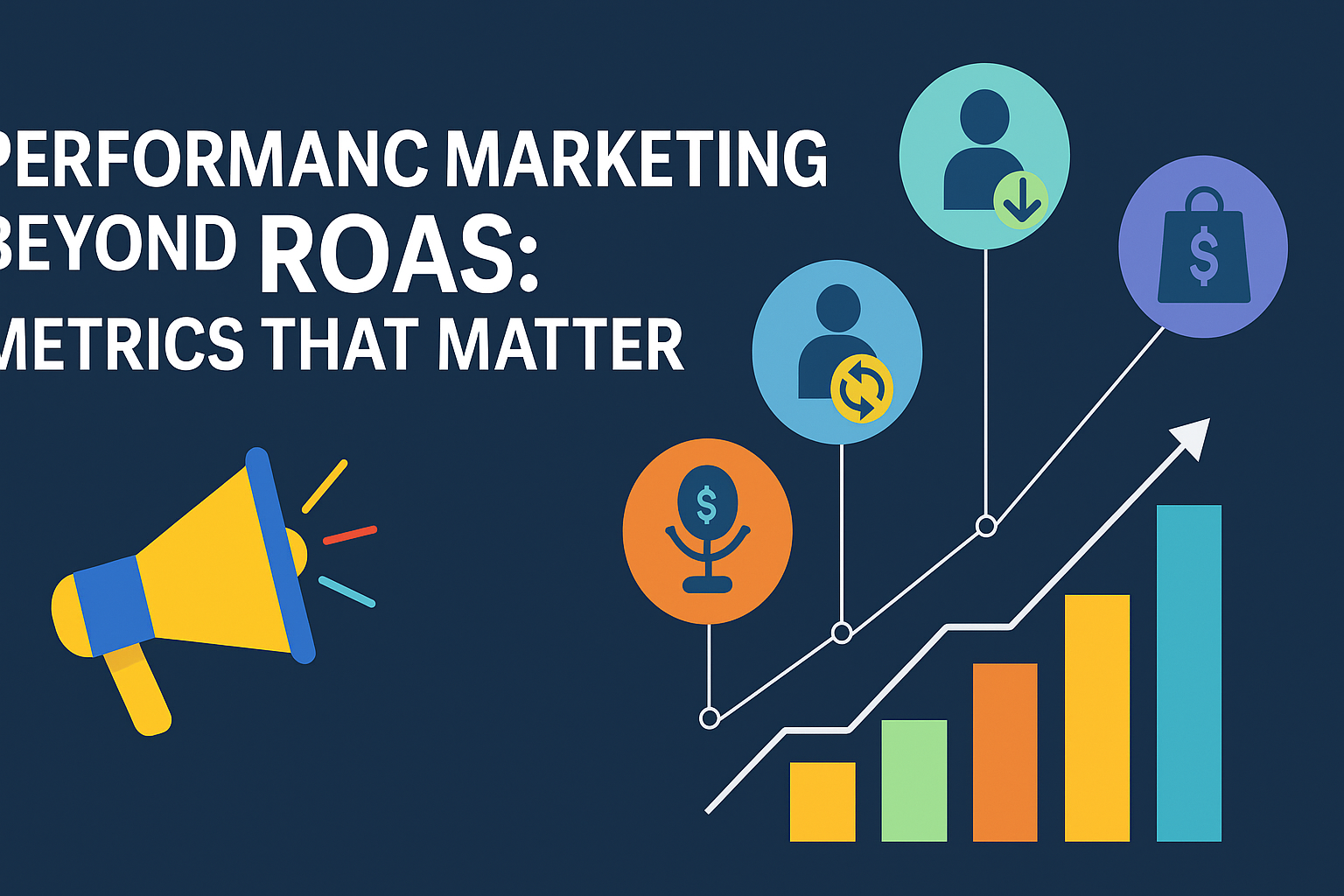Are you chasing vanity metrics like views, likes, and comments on your ads and social campaigns that don’t actually lead to conversion? Vanity metrics do not provide anything meaningful in return, such as leads and conversions.
In performance marketing, there are several data points which do not provide any valuable information about your campaign performance, but look impressive on the surface. If you’re chasing such vanity metrics, it will not help you improve the performance of marketing campaigns. Vanity metrics can look appealing, but are highly misleading and fickle. Vanity metrics only make you look good, but they do not contribute to your ad performance. We will explore various performance marketing metrics beyond ROAS that help track an ad campaign’s performance and give room for improvements –
Why ROAS Alone Isn’t Enough to Track Ad Performance?
Is ROAS a Vanity Metric?
In Performance Marketing, outcomes are measurable, where you can count sales, leads or clicks. Businesses pay for performance marketing because they want sales and conversions through their marketing campaign instead of getting impressions that do not add value to their business. One crucial performance metric is tracking Return on Ad Spend (ROAS), which is not a vanity metric but isn’t sufficient alone to measure a campaign’s success.
Businesses make substantial investments in their ad campaigns, expecting favourable outcomes for their sale. Metrics like ROAS help marketers at performance marketing company provide data-driven lead generation services. They can track crucial metrics like ROAS, among others, to make improvements in the ad and better optimise it for the viewers.
What Does ROAS Signify?
One of the common metrics marketers use to track the performance of their campaigns is ROAS, i.e., Return on Ad Spend. ROAS is calculated by Revenue from Ads ÷ Cost of Ads. Although this performance indicator is important to understand the revenue generated by the ad, but is not a sole indicator of ad success. The primary goal of this metric is to measure the revenue directly by understanding Return on ad spend. Businesses can allocate more budget to high-performing campaigns instead of spending money on underperforming ad campaigns.
ROAS also helps in campaign optimisation and provides accountability. You can measure the success of your campaign using the return on ad spend metric, which tells you if your campaigns are worth continuing or not. For example, if you invested 5000 INR in an ad campaign, but the return on ad spend value is only 2500 INR. It means that your ROAS is 50%. A negative ROAS indicates that your ad needs improvement. Performance marketing companies help brands optimise the ad platforms and create compelling ad creatives. The performance marketers follow the stages of awareness, consideration and conversion funnel to drive better ad performance. However, focusing solely on this indicator does not give you feasible results about other aspects of the campaign.
What Should You Do?
You must pay attention to other performance indicators like customer acquisition cost, average order value, customer lifetime value, customer retention rate, engagement metrics, conversion rate, campaign scalability and payback period. It is essential to focus on these growth KPIs that matter in an ad campaign. Return on ad spend metric often ignores the true cost of the campaign, misses backend revenue and has a short-term focus.
4 Growth KPIs to Track in Performance Marketing
Customer Acquisition Cost
Customer Acquisition Cost or CAC is the total cost you spend to acquire one customer. It includes the cost of ad, agency fees and other promotional costs, if any. This metric helps you determine if your campaign is running successfully and driving conversions.
To measure the long-term profitability of the campaign, performance marketing agencies should observe and track the CAC metric with CLV or Customer Lifetime Value. CAC combined with CLV will help analyse long-term profitability from the ad campaign.
Customer Lifetime Value
Customer Lifetime Value (CLV) highlights the total revenue a company will make from the customer throughout their relationship period. You can know more about long-term profitability as CLV shifts the focus from short-term benefits.
A high CLV indicates that your ad campaign is paying off because customers continue to purchase from your brand. Maintaining a high CLV is your sustainable strategy to acquire loyal customers.
Customer Retention Rate
Another important metric to track the performance of ad campaigns is Customer Retention Rate. It allows marketers to measure the percentage of customers who continue to purchase from your brand.
The Harvard Business Review stats indicate that acquiring new customers is 10 to 25 times more expensive as compared to retaining the existing ones. However, it depends on the industry in which you operate. Businesses face significant struggle in retaining existing customers as new brands keep popping up that target the same pool of customers as they do. In such a competitive environment, it is important to maintain a higher retention rate of customers, which signals a sustainable competitive advantage for your brand.
A good retention rate highlights that you are providing an exceptional customer experience and that your product is an ideal fit for customers. You can employ strategies like post-purchase content, employee programs, personalised experience and 24/7 AI-powered customer support to enhance the customer retention rate.
Average Order Value
You should measure what your customer spends on average on each order within a specific period. It’s an important metric called Average Order Value. You can determine this by dividing total revenue by the number of orders.
Average order value gives you insights about the product pricing. You have the opportunity to adjust your pricing strategy to encourage higher spending among customers. You can create bundles (group different products together) or offer discounts to modify your product pricing and appeal to customers. It also highlights customer spending patterns based on which you can set or adjust your marketing goals.
To Sum Up
If investing blindly in ad campaigns in the hope of conversions and leads is not your goal, you need to collaborate with a proven performance marketing company. The right marketing agency will help you turn your vision into measurable results. Using actionable metrics, you can evaluate the performance of ad campaigns. Our marketers and social media strategists at VerveOnlineMarketing, a leading performance marketing company in Miami, will help your brand achieve a loyal customer base.






